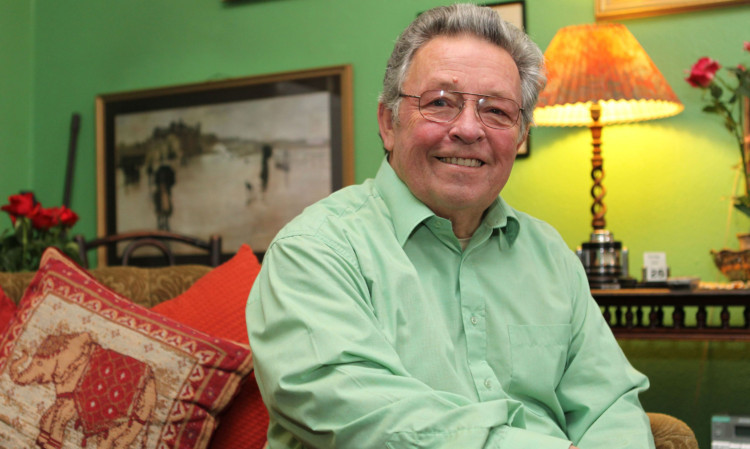
It took 18 months for Tom Muir’s lung cancer to be diagnosed after the symptoms first appeared. By that time the disease was well advanced.
The former bank worker only survived after a lung was removed and he received aggressive chemotherapy.
Tom, 71, from Rothesay, said: “I was 68 when I noticed I was getting a wee bit out of puff. I just put it down to getting old. Months later I developed a cough that wouldn’t go away. Initially I was given antibiotics which seemed to help.
“The cough would come and go but I never thought too much of it. I never dreamed it was lung cancer I quit smoking when I was 40. It could’ve been developing for years before I even noticed the symptoms.”
Sadly, Tom’s story is typical of many lung cancer patients.
But a new Scots study hopes to change the way the disease is diagnosed and save thousands of lives a year.
It’s looking at a lung cancer blood test a simple screening method that detects certain antibodies produced when cancer is present. It can flag up signs of deadly tumours months or even years earlier than current methods of diagnosis.
The scientist in charge of the trial, Professor Frank Sullivan of Dundee University, said: “Lung cancer is diagnosed far too late. The figures associated with the disease are horrendous 90% of people diagnosed with lung cancer in Scotland are dead within five years. And with it being diagnosed so late, treatments can be drastic and gruelling.”
The trial is being conducted in the Greater Glasgow and Tayside NHS regions and aims to recruit 10,000 volunteers. GPs in the two health board areas are contacting “at risk” patients such as smokers and former smokers to take part in the study.
Half will have their blood tested and all will be tracked for up to 10 years to see what happens. Volunteers with “positive” results will get scans and X-rays and treatment as necessary.
Professor Sullivan said: “The test can potentially detect tumours when they measure just a few cells in size. It means treatment is much easier and survival rates much better.”
One of the major reasons lung cancer is detected so late is symptoms aren’t always obvious a slight, persistent cough or breathlessness.
Professor Sullivan said: “By the time symptoms become obvious the disease can be quite advanced. Sometimes people are reluctant to get checked out too.
“There can be a fatalistic attitude with Scottish smokers. They think: ‘I’ve been smoking 30, 40 years, what’s the point?’ As a result, tumours can have been growing for 18 months before they’re found.”
Chemotherapy and radiotherapy courses are also much more intense than would otherwise be necessary if the disease was caught earlier.
If the trial is a success, Professor Sullivan reckons “at risk” groups could one day be routinely tested just as every Scot over age 50 is offered bowel cancer screening test.
The Professor said: “It’s not going to happen overnight, we’re talking maybe a decade down the line.
“This screening has the potential to save thousands of lives around the world.”
Lung cancer is the second most common cancer in the UK after breast cancer. Approximately 42,000 people were diagnosed with the disease in 2010, around 115 people A DAY. Cases of lung cancer in Scotland, particularly in the Greater Glasgow area, are among the highest in the world.
Reasons include the high number of smokers in the area and and also the large amount of asbestos used in many of the heavy industries associated with the area over the years, such as shipbuilding.
In England there’s a geographical divide, too, with more cases of lung cancer in the North.
For more info visit cancerresearchuk.org

Enjoy the convenience of having The Sunday Post delivered as a digital ePaper straight to your smartphone, tablet or computer.
Subscribe for only £5.49 a month and enjoy all the benefits of the printed paper as a digital replica.
Subscribe